Targeting HECTD3-IKKα axis inhibits inflammation-related metastasis
- PMID: 35918322
- PMCID: PMC9345961
- DOI: 10.1038/s41392-022-01057-0
Targeting HECTD3-IKKα axis inhibits inflammation-related metastasis
Abstract
Metastasis is the leading cause of cancer-related death. The interactions between circulating tumor cells and endothelial adhesion molecules in distant organs is a key step during extravasation in hematogenous metastasis. Surgery is a common intervention for most primary solid tumors. However, surgical trauma-related systemic inflammation facilitates distant tumor metastasis by increasing the spread and adhesion of tumor cells to vascular endothelial cells (ECs). Currently, there are no effective interventions to prevent distant metastasis. Here, we show that HECTD3 deficiency in ECs significantly reduces tumor metastasis in multiple mouse models. HECTD3 depletion downregulates expression of adhesion molecules, such as VCAM-1, ICAM-1 and E-selectin, in mouse primary ECs and HUVECs stimulated by inflammatory factors and inhibits adhesion of tumor cells to ECs both in vitro and in vivo. We demonstrate that HECTD3 promotes stabilization, nuclear localization and kinase activity of IKKα by ubiquitinating IKKα with K27- and K63-linked polyubiquitin chains at K296, increasing phosphorylation of histone H3 to promote NF-κB target gene transcription. Knockout of HECTD3 in endothelium significantly inhibits tumor cells lung colonization, while conditional knockin promotes that. IKKα kinase inhibitors prevented LPS-induced pulmonary metastasis. These findings reveal the promotional role of the HECTD3-IKKα axis in tumor hematogenous metastasis and provide a potential strategy for tumor metastasis prevention.
© 2022. The Author(s).
Conflict of interest statement
The authors declare no competing interests.
Figures
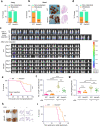

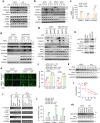
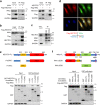
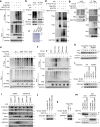
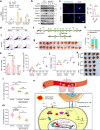
Similar articles
-
Ablation of endothelial Pfkfb3 protects mice from acute lung injury in LPS-induced endotoxemia.Pharmacol Res. 2019 Aug;146:104292. doi: 10.1016/j.phrs.2019.104292. Epub 2019 Jun 2. Pharmacol Res. 2019. PMID: 31167111 Free PMC article.
-
The HECTD3 E3 ubiquitin ligase facilitates cancer cell survival by promoting K63-linked polyubiquitination of caspase-8.Cell Death Dis. 2013 Nov 28;4(11):e935. doi: 10.1038/cddis.2013.464. Cell Death Dis. 2013. PMID: 24287696 Free PMC article.
-
Hectd3 promotes pathogenic Th17 lineage through Stat3 activation and Malt1 signaling in neuroinflammation.Nat Commun. 2019 Feb 11;10(1):701. doi: 10.1038/s41467-019-08605-3. Nat Commun. 2019. PMID: 30741923 Free PMC article.
-
Beyond NF-κB activation: nuclear functions of IκB kinase α.J Biomed Sci. 2013 Jan 23;20(1):3. doi: 10.1186/1423-0127-20-3. J Biomed Sci. 2013. PMID: 23343355 Free PMC article. Review.
-
Regulation and function of IKK and IKK-related kinases.Sci STKE. 2006 Oct 17;2006(357):re13. doi: 10.1126/stke.3572006re13. Sci STKE. 2006. PMID: 17047224 Review.
Cited by
-
Epigenetic Modifiers in Cancer Metastasis.Biomolecules. 2024 Jul 27;14(8):916. doi: 10.3390/biom14080916. Biomolecules. 2024. PMID: 39199304 Free PMC article. Review.
-
Stromal cells in the tumor microenvironment: accomplices of tumor progression?Cell Death Dis. 2023 Sep 4;14(9):587. doi: 10.1038/s41419-023-06110-6. Cell Death Dis. 2023. PMID: 37666813 Free PMC article. Review.
-
HECTD3 regulates the tumourigenesis of glioblastoma by polyubiquitinating PARP1 and activating EGFR signalling pathway.Br J Cancer. 2022 Nov;127(11):1925-1938. doi: 10.1038/s41416-022-01970-9. Epub 2022 Sep 10. Br J Cancer. 2022. PMID: 36088509 Free PMC article.
-
HECTD3 inhibits NLRP3 inflammasome assembly and activation by blocking NLRP3-NEK7 interaction.Cell Death Dis. 2024 Jan 24;15(1):86. doi: 10.1038/s41419-024-06473-4. Cell Death Dis. 2024. PMID: 38267403 Free PMC article.
-
Macrophage polarization in spinal cord injury repair and the possible role of microRNAs: A review.Heliyon. 2023 Nov 27;9(12):e22914. doi: 10.1016/j.heliyon.2023.e22914. eCollection 2023 Dec. Heliyon. 2023. PMID: 38125535 Free PMC article. Review.
References
-
- Funaki S, et al. Novel approach for detection of isolated tumor cells in pulmonary vein using negative selection method: morphological classification and clinical implications. Eur. J. Cardiothorac. Surg. 2011;40:322–327. - PubMed
Publication types
MeSH terms
Substances
LinkOut - more resources
Full Text Sources
Medical
Molecular Biology Databases
Miscellaneous

